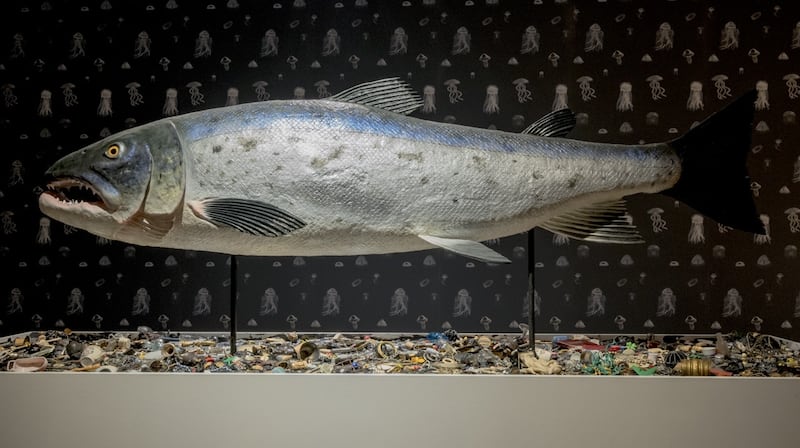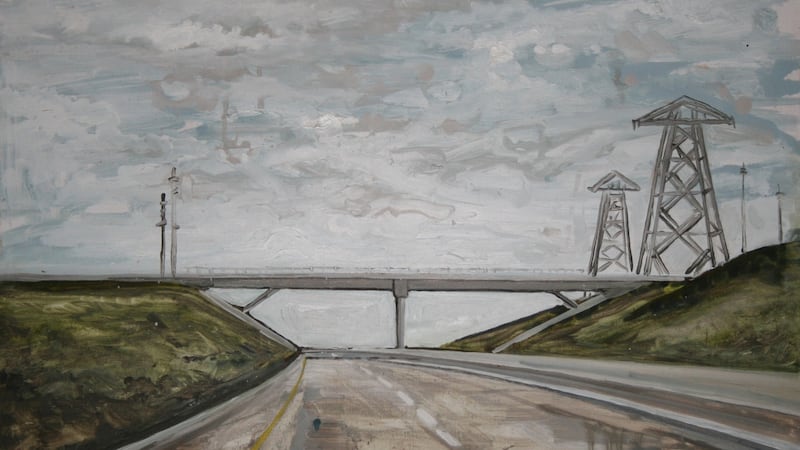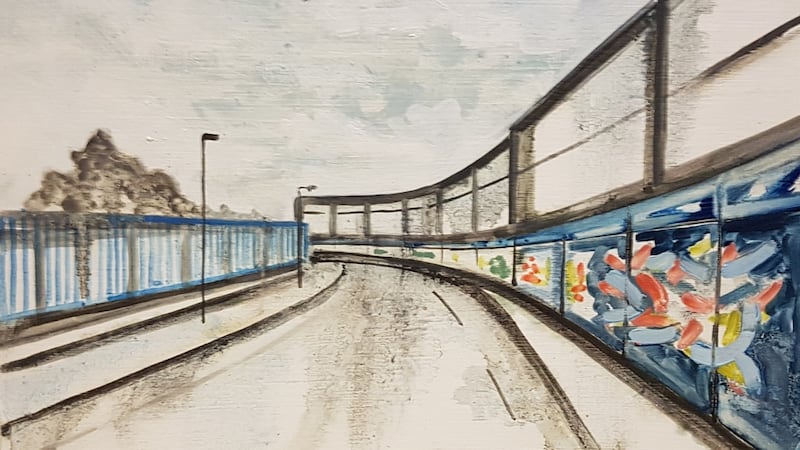Mark Dion: Our Plundered Planet
★★★★☆
Dublin City Gallery, The Hugh Lane, Charlemont House, Parnell Sq North, Dublin, until September 1st; hughlane.ie
With the emergence of Extinction Rebellion and the increasingly alarming manifestations of environmental problems, it might seem that Mark Dion’s Our Plundered Planet at the Hugh Lane Gallery is an opportunistically timed, virtue-signalling exercise.
But Dion has long been interested in, and addressed, what is termed “the natural world”. Or, more specifically, our relationship with it; how we regard it; mediate it; exploit it; categorise and organise it. Perhaps appropriately, Our Plundered Planet is an uneasy presence in the Hugh Lane, because it is uneasy in itself – charged with a dreaded awareness that we have, in all likelihood, blown it.

Dion’s vast installation Neukom Vivarium near Seattle, created in 2006, is a monumentally sized trunk of a Western Hemlock. Housed in a greenhouse, the fallen tree is the nutritive site for a mass of life forms. But, as Dion has pointed out that, rather than being a feel-good, wonders-of-nature display, the work illuminates how the tree was once a central part of a complex ecosystem which, once gone, is virtually impossible to revive or recreate. It is, in a way, a monument to human failure.
Yet Dion is not an eco-warrior per se. If it wasn’t for the unusual urgency of environmental issues, what he does could be categorised under the general art-world heading of “institutional critique”. In that context, his quarrel is not so much with the human impact on the planet’s ecosystem, as with the culturally – and ideologically – determined constructions which frame our understanding of that.
Display cabinets
The enormously detailed pieces – they merit close, careful attention – that make up Our Plundered Planet ironically adopt the guises of several cultural forms. Most notable, perhaps, is one closely associated with Dion, the Wunderkammen – cabinets of curiosities that proliferated from the 16th century. These hugely diverse, or just plain miscellaneous, repositories of samples fed into the development of museums in Europe. Historically, both cabinets of curiosities and natural history museums implicitly accepted human exceptionalism. The world, organic and inorganic, is there for our benefit and amusement, especially, for quite a while, if the “our” was a white, colonising “our”.

Similarly, Dion mocks up a natural history bookstall (another recurrent format), not unlike one of the stalls on the Seine in Paris. Museological display cabinets of specimens are another favoured motif, and one is included, emphasising the representation of natural history as a kind of theatre. Then there is jellyfish wallpaper, and a Crow on a throne of trinkets, comparatively alluding to the bird’s instinct to carry off finds. Both crow and, in another piece, the salmon, offer parodies of the collectors who shaped the cabinets of curiosities.

Humans and the natural world
What’s singularly lacking, at least in this sample of Dion’s work, is a sense of how human views of the natural world have evolved. Perhaps because that involvement has largely been through efforts of various experts – the scientifically or philosophically involved – as well as artists who, corralled under the banner of rationality, Dion seems to innately distrust. Human exceptionalism, for example, has been, and is being, irrevocably undermined, to the extent that, largely thanks to numerous studies of animal behaviour, our privileged claim to consciousness doesn’t stand up to any scrutiny outside of blinkered prejudice or dogma.
Peter Singer’s utilitarian argument on animal rights in 1975 and Christine Korsgaard’s recent compelling Kantian-based argument in Fellow Creatures on our moral responsibilities towards non-human animals, are among the many works that have redrawn the moral and ethical boundaries. Stimulating and compelling as Dion’s work is, it’s as if his point of view is retrospectively located, back in the period that dominates the forms he mostly employs. It would be interesting to see an engagement between him and the Museum of Natural History in Dublin, a preserved specimen in itself.

David Fox: An Altered Land
★★★★☆
Olivier Cornet Gallery, 3 Great Denmark St, Dublin, until May 12th; oliviercornetgallery.com
In his paintings, David Fox explores motorways as environments in themselves. A road might be nothing more than a line of tarmac threading its way along the contours of the landscape, but a motorway is a vast spatial structure. It doesn’t just divide the terrain it occupies; it pushes it back and changes its character, creating an entirely new space for itself. Fox’s compositions usually offer a driver’s perspective on the road. An accompanying note mentions that he was influenced by cinema, and there is usually a forward momentum, a sense of approach in his views.

He works from source photographs but paints with oil, and he is very considered in his use of the medium, alternating thin washes of colour with more opaque passages. Opacity, even solidity, resides in the clouds, massed over the acres of slick, flat, wet road surface. Several locations feature, including the North-South Border, due to the fact that Fox was based in Belfast at the time, and often drove home to Tullamore, rather than setting out to make a point. The paintings that make up An Altered Land offer a novel insight into the contemporary Irish landscape.











